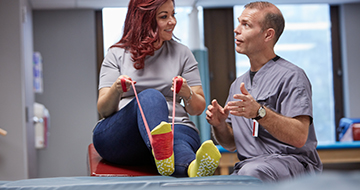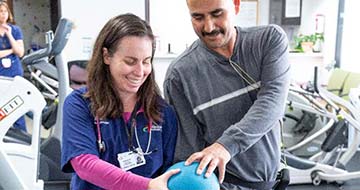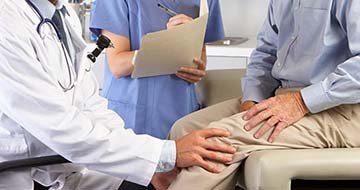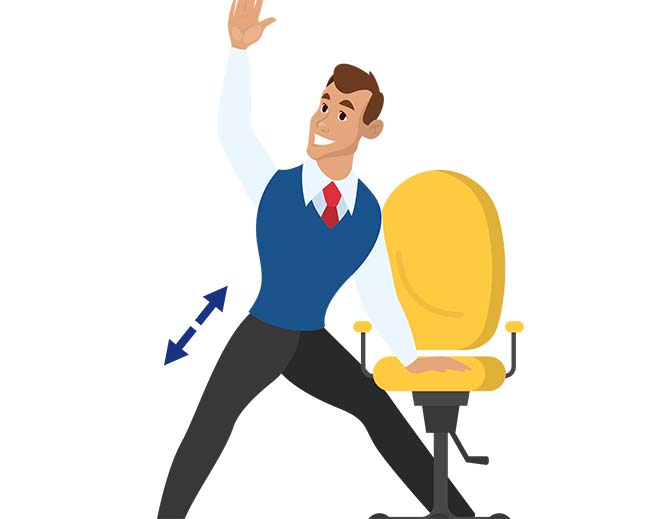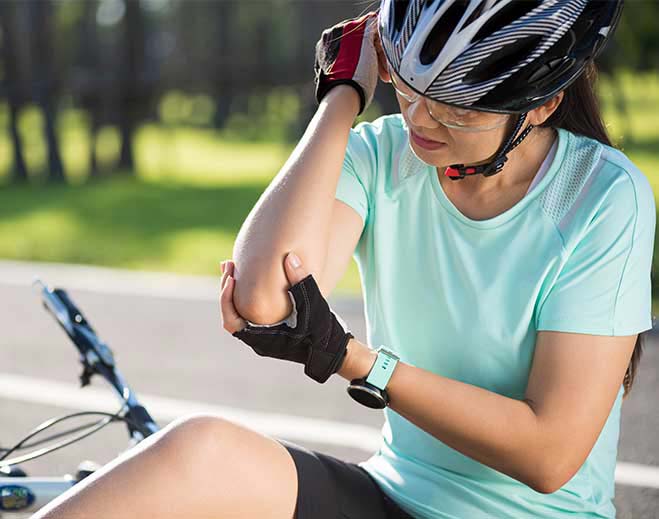Keeping You Moving
Valley Baptist Medical Center is a regional leader in orthopedic care and joint replacement. If you’re experiencing joint pain or need joint replacement, our orthopedic specialists and surgeons can help relieve pain and get you back to the activities
you love.
What Is Orthopedics?
Orthopedics is a branch of medicine that deals with the musculoskeletal system, which is made up of muscles, bones, joints, ligaments and tendons. Doctors who specialize in musculoskeletal conditions are called orthopedic doctors.
What Do Orthopedic Doctors Do?
At Valley Baptist Medical Center, we have compassionate orthopedic doctors dedicated to providing customized care for every patient’s unique need. Orthopedic doctors, also known as orthopedists, bone specialists or orthopedic specialists, are responsible
for:
- diagnosing and treating musculoskeletal conditions
- assisting with rehabilitation following an injury or surgery
- preventing chronic conditions, such as arthritis, from worsening
Orthopedists can have different subspecialties such as:
- Spine
- Hip and knee
- Hand
- Shoulder and elbow
- Foot and ankle
- Sports medicine
- Trauma surgery
When treating your orthopedic problems, the orthopedic specialist team may include:
- Physician assistants
- Nurse practitioners
- Occupational and physical therapists
- Athletic trainers
Valley Baptist Medical Center’s orthopedic team might recommend various treatments and procedures according to the patient’s need. These may include nonsurgical treatments, also called conservative treatments, and surgical treatments. Please
keep in mind that our orthopedists at Valley Baptist Medical Center will recommend conservative treatments before considering surgery. Orthopedic surgeons are responsible for suggesting surgical treatments when conservative treatments are not enough.
Common Orthopedic Conditions
Whether your pain is caused by an injury, aging or a health condition, our orthopedic surgeons in Harlingen and Brownsville can help you with a personalized treatment plan, including surgical options for more severe cases. Conditions treated at our clinics
in Harlingen and Brownsville may include, but are not limited to:
- Arthritis
- Back pain
- Bone cancer
- Bone fractures
- Carpal tunnel syndrome
- Hip pain
- Joint pain
- Knee pain
- Ligament injuries
- Limb abnormalities
- Muscle strains
- Neck pain
- Spine pain
- Sports-related injuries
- Sprains
- Tendon injuries
Orthopedic Tests and Treatments at Valley Baptist Health System
Before deciding on your treatment plan, orthopedic doctors might suggest various diagnostic tests for proper treatment of joint pain. The most common diagnostic tests include:
- Arthography – used to diagnose unexplained joint pain. A contrast iodine solution is injected to clearly see joint structures, and joint X-rays are taken using a fluoroscope.
- Blood tests – a simple process that involves taking a blood sample from the arm to check for specific substances in the blood that indicate certain conditions, such as rheumatoid arthritis.
- Bone scan – There are two different types of bone scans. One tests for bone density specifically for osteoporosis. The second one determines the solidity of the bone and is used to pinpoint stress fracture sites, infections, arthritis
or cancer.
- Computed tomography (CT) scan – a procedure that combines different X-ray images to create a two-dimensional view of the joints.
- Discography – a procedure that determines if the condition of the discs, also called cushioning pads, may be the cause of back pain.
- Doppler ultrasound – creates a picture of the blood vessels and can determine any blockage.
- Dual-energy X-ray absorptiometry (DEXA) – measures bone density by taking pictures of the bones and calculating their densities.
- Electromyography – records and analyzes any damage in the nerves of the arms and legs.
- Flexibility tests – tests the range of motion and looks for muscle imbalance or arthritis in a joint.
- Magnetic resonance imaging (MRI) – uses magnetic fields to take pictures of the bones and soft tissues of the body.
- Muscle tests – orthopedist examines patient’s movements while applying pressure on muscles. Weak muscles may indicate injury to the tendons, nerves or weakness from disuse.
- Nerve conduction study (NCS) – recommended for patients who have symptoms of carpal tunnel syndrome or ulnar nerve entrapment. It stimulates nerves in various places to determine the specific location of damage.
- Palpation – Orthopedic doctor simply touches the muscles to see if they are warm or swollen.
- Physical examination – may involve the orthopedic doctor observing, gait analysis, palpation, muscle testing, flexibility testing, reflex response and laboratory tests (complete blood count and urinalysis).
- Radiographs (X-rays) – uses radiation to create a picture of the body’s internal structure, looks for fractures and dislocations.
- Range of motion testing – also called flexibility tests, determines how well a joint moves.
- Stress tests – measures the effectiveness of the cardiovascular system.
- Venography – checks for blood clots in the leg by injecting a dye prior to X-ray for clearer photos of the legs
Once diagnosed, the orthopedic doctor or orthopedic surgeon creates a customized treatment plan for the patient. Treatment plans vary from patient to patient, and may include:
Nonsurgical Treatments
- Exercise – specific exercises or stretches to maintain or improve strength, flexibility and range of motion.
- Immobilization – use of braces, splints and casts to prevent additional strain to an area.
- Medications – over-the-counter medications, such as ibuprofen and aspirin and prescription drugs, such as corticosteroids and other anti-inflammatory medications.
- Lifestyle changes – adjusting diets and modifying physical activities.
Surgical Treatments
- Joint replacement surgery – knee replacement surgery or hip replacement surgery to replace damaged or diseased part of a joint with artificial parts.
- Internal fixation – use of pins, screws, plates and rods to hold bones in place while healing.
- Fusion – often used in neck and spine surgery, a graft fuses two broken bones.
- Osteotomy – often used to treat arthritis, involves cutting a part of a bone then repositioning it.
- Soft tissue repair – repairing severely damaged muscles, ligaments or tendons.
- Release surgery – reduces pressure on the median nerve, used to treat carpal tunnel syndrome.
When Should I Worry About Joint Pain?
When you experience joint pain and you experience these symptoms, please see an orthopedic doctor near you:
- Persistent and recurring pain and swelling of the joint, bone or muscle
- Significant decrease in range of motion of a joint
- Joint pain affecting your quality of life
- Numbness and tingling sensation in arms or legs
- An injury that needs attention
Pediatric Orthopedics at Valley Baptist Health System
A child’s musculoskeletal system is different from an adult’s, so their system’s response to injury, infections and deformities differ. At Valley Baptist Health System, we have pediatric orthopedics in Brownsville, Texas specifically
dedicated to your child’s musculoskeletal problems.
Dedicated to You
Because of our dedication to orthopedic care, many of our patients are only with us for a day before they return home. Regardless, you are placed in a hospital room before surgery, and return you to that same room afterward. And you’ll receive care
from a dedicated support team made up of highly skilled nurses and other care providers — many of whom have been with us 20 years or more.
Why Choose Valley Baptist Health System?
Valley Baptist Medical Center-Harlingen
- Certified by the Joint Commission for knee and hip replacement. In June of 2016, the hospital received this certification for the third time.
- Home to our joint camp program, helping to prepare you for joint replacement surgery.
Valley Baptist Medical Center-Brownsville
- Only hospital in Cameron county to offer Navio partial knee replacement.
- Offers a hip replacement surgery called anterior total hip arthroplasty replacement that is less invasive, helping to reduce complications and provide a quicker recovery.

